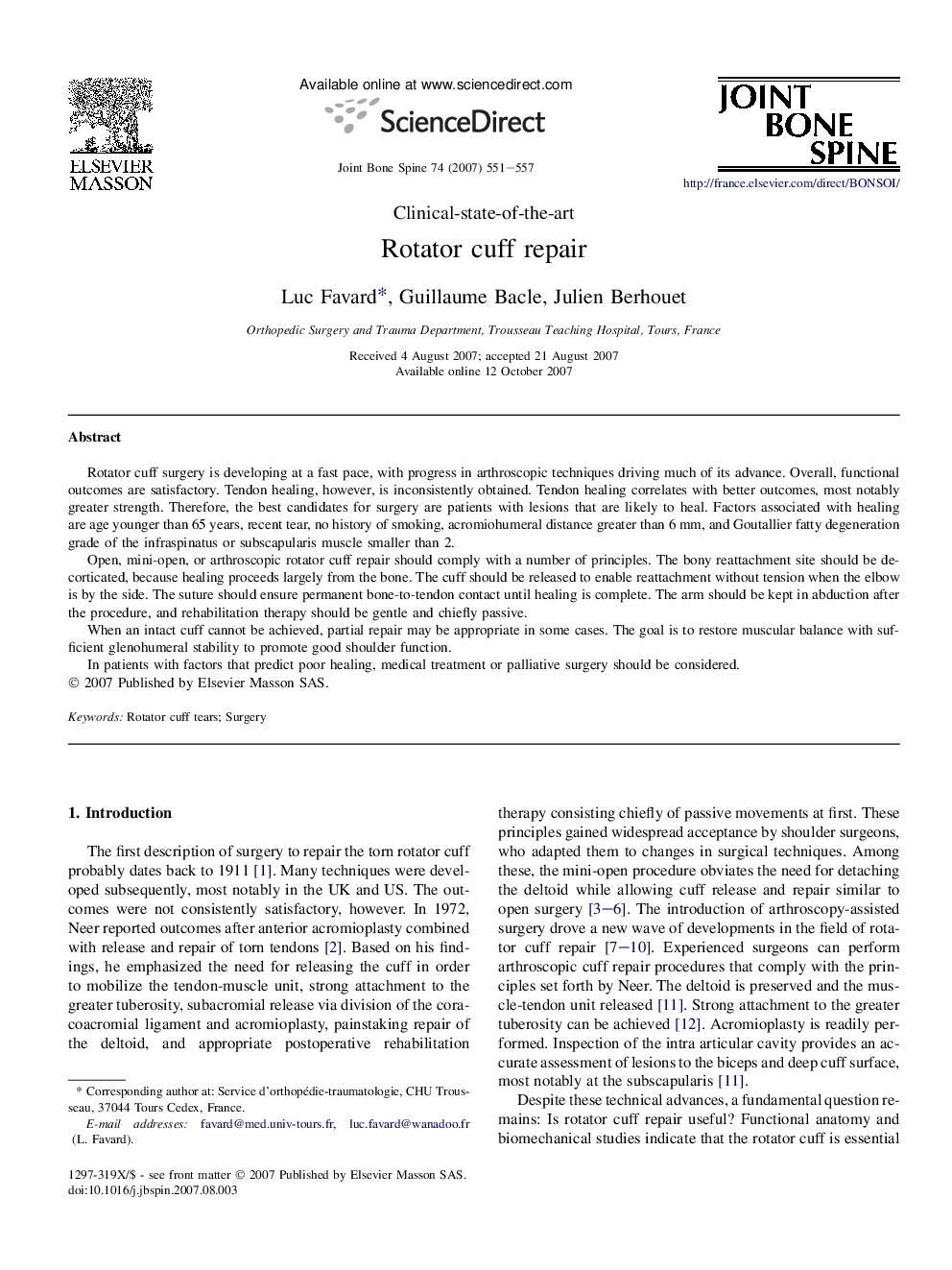| Article ID | Journal | Published Year | Pages | File Type |
|---|---|---|---|---|
| 3367086 | Joint Bone Spine | 2007 | 7 Pages |
Rotator cuff surgery is developing at a fast pace, with progress in arthroscopic techniques driving much of its advance. Overall, functional outcomes are satisfactory. Tendon healing, however, is inconsistently obtained. Tendon healing correlates with better outcomes, most notably greater strength. Therefore, the best candidates for surgery are patients with lesions that are likely to heal. Factors associated with healing are age younger than 65 years, recent tear, no history of smoking, acromiohumeral distance greater than 6 mm, and Goutallier fatty degeneration grade of the infraspinatus or subscapularis muscle smaller than 2.Open, mini-open, or arthroscopic rotator cuff repair should comply with a number of principles. The bony reattachment site should be decorticated, because healing proceeds largely from the bone. The cuff should be released to enable reattachment without tension when the elbow is by the side. The suture should ensure permanent bone-to-tendon contact until healing is complete. The arm should be kept in abduction after the procedure, and rehabilitation therapy should be gentle and chiefly passive.When an intact cuff cannot be achieved, partial repair may be appropriate in some cases. The goal is to restore muscular balance with sufficient glenohumeral stability to promote good shoulder function.In patients with factors that predict poor healing, medical treatment or palliative surgery should be considered.
